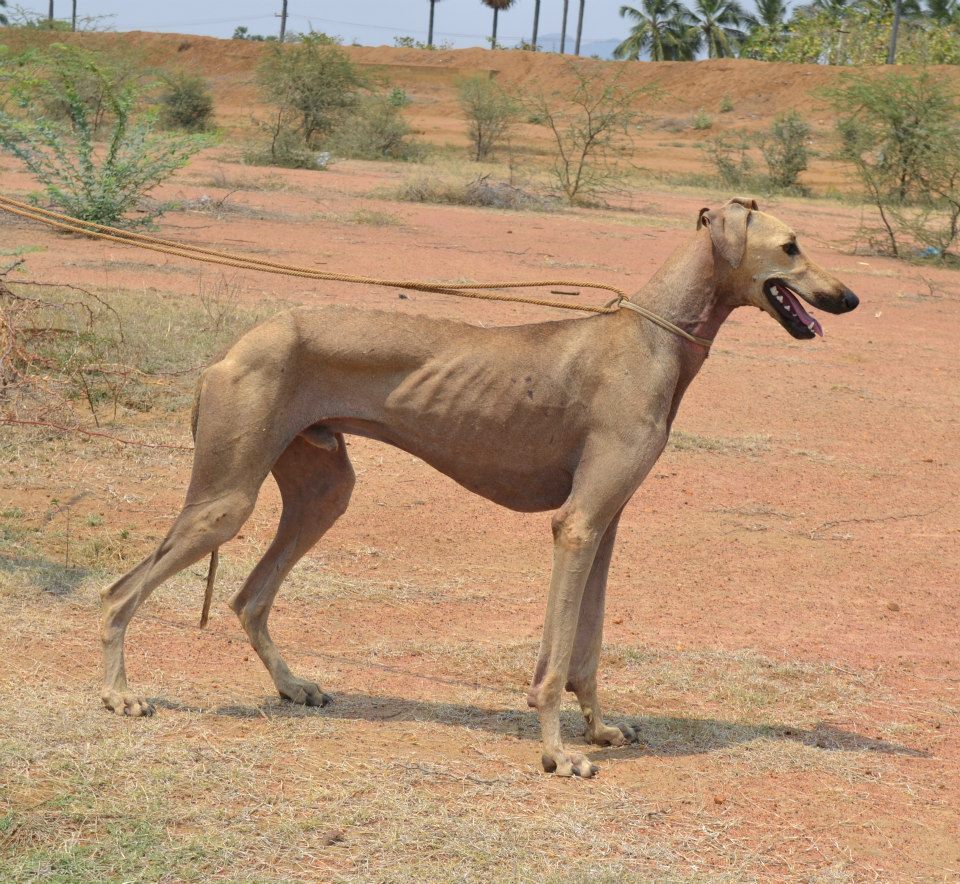
When we talk about sighthounds, names like the Greyhound, Whippet, and Saluki often come to mind. But India has its own native speedsters: the Chippiparai and the Kanni. These elegant dogs from South India are among the lesser-known sighthounds, yet they share many of the same physical and physiological traits that make all sighthounds remarkable runners.
So what exactly makes the Chippiparai and Kanni so fast?
Double-Suspension Gallop
Like all true sighthounds, Chippiparai and Kanni dogs use a double-suspension gallop. This means that during each full stride, there are two moments when all four feet are off the ground — one during the extended phase and one when the legs are tucked beneath the body. This gallop allows them to cover ground in huge, powerful strides.
Flexible Spine
One secret to their speed is their flexible spines. A flexible spine acts like a spring, extending and contracting with each bound. Combined with long, strong loins, this spinal flexibility lets the back arch and stretch, lengthening the stride even more.
Tucked-Up Abdomen
You’ll notice that Chippiparai and Kanni dogs have a tucked-up abdomen — this is a classic sighthound trait. It allows greater bending of the spine and room for the hind legs to swing far forward under the body for a strong push-off.
Long Legs and Light Build
Another reason these breeds are fast is their legginess. Their legs are long compared to their body depth, which gives them a powerful stride and high speed potential. Unlike heavier breeds, Chippiparai and Kanni are lightly built, with minimal excess weight. Less weight means they can accelerate faster, maintain high speeds, and make quick turns when chasing prey across fields.
Straighter Front Angulation
Sighthounds tend to have more open front angulation — the angle formed at the shoulder — allowing a longer stride. This is true for Chippiparai and Kanni dogs too, whose shoulder structure helps maximize reach and efficiency when running.
Deep Chests and Large Hearts
Racing Greyhounds are famous for their deep chests and large hearts, which pump huge volumes of blood to their muscles during a sprint. Chippiparai and Kanni dogs, bred for hunting hare in hot climates, share this deep-chested build, giving them the cardiac capacity and lung room needed for explosive bursts of speed.
Specialized Muscle Fibers
Fast sighthounds like Greyhounds have more fast-twitch muscle fibers that deliver powerful, quick contractions needed for sprinting. While detailed studies on Chippiparai and Kanni muscle composition are limited, their sprinting ability and endurance suggest they share this trait too.
Light Bones and Lean Frames
Speed has its price: heavier bones or excess body fat slow a runner down. Chippiparai and Kanni are naturally lean, with light bone structures that help them cover long distances quickly and turn sharply when chasing prey.
The Specialist Edge
Like other sighthounds, Chippiparai and Kanni are specialists: built for bursts of high speed rather than brute strength or heavy pulling. They are agile enough to twist and turn after nimble quarry in the scrub and fields of Tamil Nadu.
What’s Inside Matters Too
Beyond what we can see, their physiology — large hearts, efficient lungs, and fast-twitch muscles — helps these breeds perform at peak speed. Just as with any great sighthound, their breeding favors running, not trotting or endurance plodding.
The Chippiparai and Kanni stand as proof that India’s native sighthounds are every bit as specialized as their more famous cousins. When breeding or training them, their purpose as fleet-footed coursers should always be kept in mind. The best coursers are bred to run, and the worst thing we can do is breed them away from what makes them so remarkable: pure speed.

